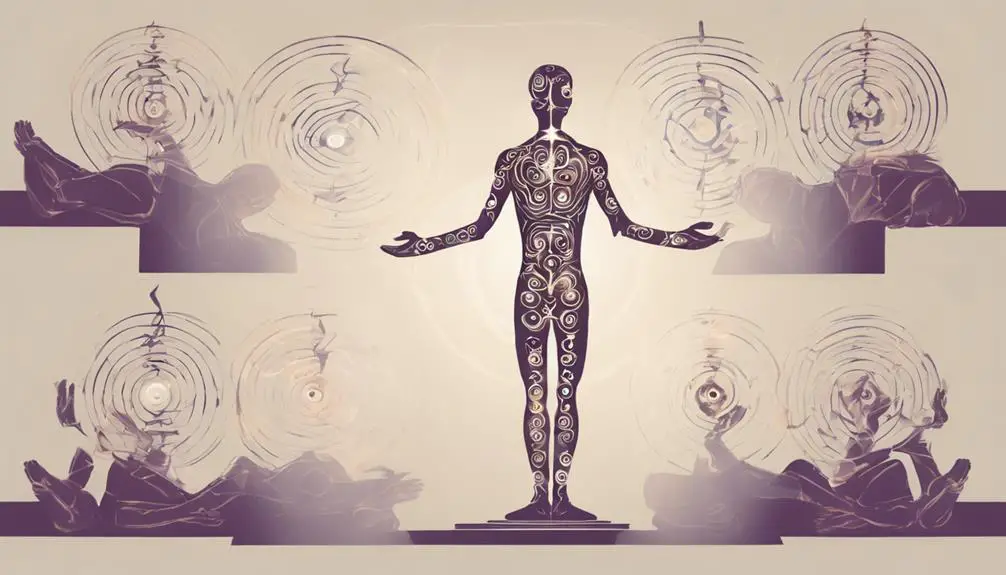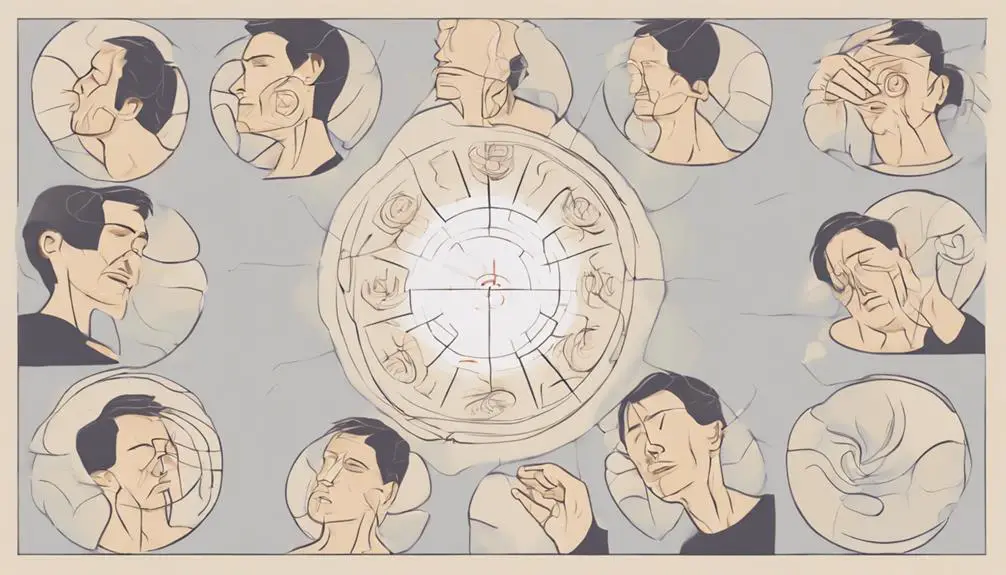Hypnosis Induction Techniques
Mastering Advanced Deep Trance Hypnosis Techniques: A Step-By-Step Guide
October 25, 2021 - Hypnosis Induction Techniques
Unlock the secrets of mastering advanced deep trance hypnosis techniques with a detailed step-by-step guide. Explore altered states of awareness and the power of accessing the subconscious mind. Learn efficient rapid induction methods for quick hypnotic states and how to deepen the hypnotic state using fractionation techniques. Discover the importance of ideomotor responses and the impact of Ericksonian language patterns on inducing suggestibility. Dive into enhancing deep trance phenomena with visualization techniques and post-hypnotic suggestions for therapeutic breakthroughs. Unleash your potential in deep trance hypnosis through this comprehensive guide.
Understanding Deep Trance Hypnosis Levels

To comprehend the intricacies of deep trance hypnosis levels, it is essential to delve into the varying states of consciousness that individuals can experience during hypnosis.
Deep trance hypnosis involves reaching altered states of awareness, where individuals can access their subconscious minds and explore hypnotic depths that are not typically accessible in our waking state. These hypnotic states allow for profound subconscious exploration, enabling individuals to tap into hidden memories, emotions, and beliefs.
During deep trance hypnosis, individuals may experience a heightened sense of focus and suggestibility, making it an ideal state for therapeutic interventions and personal development. By guiding individuals into these hypnotic depths, practitioners can facilitate powerful changes in behavior, thought patterns, and emotional responses.
It is within these altered states of consciousness that the true potential of hypnosis as a tool for healing and transformation can be realized.
Understanding the nuances of deep trance hypnosis levels is crucial for practitioners looking to harness the full therapeutic benefits of hypnotic techniques and guide individuals towards profound self-discovery and growth.
Utilizing Rapid Induction Methods
Exploring the efficient application of rapid induction techniques in deep trance hypnosis can significantly enhance the speed and effectiveness of inducing hypnotic states. Rapid induction methods, such as instant inductions, allow hypnotists to quickly guide individuals into deep hypnotic depths.
These hypnotic techniques are particularly useful when time is limited or when working with individuals who may have difficulty entering a trance state through traditional methods.
Implementing Fractionation Techniques

Implementing fractionation techniques in deep trance hypnosis involves the strategic repetition of hypnotic inductions and awakenings to deepen the hypnotic state and enhance suggestibility. Fractionation benefits include the ability to induce a deeper state of hypnosis, increasing responsiveness to suggestions, and potentially accelerating therapeutic outcomes. However, some drawbacks may include possible disorientation or confusion in the client if not implemented carefully.
There are various variations of fractionation techniques, such as using different induction methods or altering the frequency of the cycles of trance and wakefulness. These variations allow hypnotists to tailor the approach to suit the individual needs of the client and maximize the effectiveness of the hypnosis session.
Fractionation techniques find applications in enhancing the depth of hypnosis for therapeutic purposes, facilitating profound relaxation, and addressing issues like anxiety, phobias, or habits. By skillfully utilizing fractionation, hypnotists can help clients achieve profound states of trance and make positive changes in their thoughts, behaviors, and emotions.
Exploring Ideomotor Responses
When considering the depth and intricacies of deep trance hypnosis techniques, a fundamental aspect to explore involves understanding and utilizing ideomotor responses within the hypnotic process. Ideomotor responses are subconscious movements that occur without conscious awareness, often manifesting as nonverbal communication during hypnosis. These responses can provide valuable insights into the client's inner thoughts, feelings, and beliefs, allowing the hypnotist to tailor their approach more effectively.
By observing subtle cues such as micro-movements, changes in breathing patterns, or shifts in body posture, a skilled hypnotist can decipher the client's subconscious communication and guide the session accordingly. Utilizing ideomotor responses can enhance rapport, deepen the hypnotic state, and facilitate therapeutic breakthroughs.
Incorporating ideomotor responses into deep trance hypnosis techniques requires keen observation skills, empathy, and a deep understanding of nonverbal cues. By harnessing these subtle yet powerful indicators, the hypnotist can create a profound therapeutic experience that taps into the client's innermost thoughts and emotions.
Harnessing Ericksonian Language Patterns

Understanding and effectively utilizing Ericksonian language patterns is a crucial skill for deep trance hypnotists seeking to enhance communication and facilitate profound therapeutic transformations. By mastering the art of inducing suggestibility through language nuances, hypnotists can access the subconscious mind and create a powerful platform for change.
Ericksonian language patterns, named after the renowned psychiatrist Milton H. Erickson, emphasize the importance of subtle and indirect communication to bypass resistance and engage the subconscious mind more effectively.
Incorporating hypnotic language into conversations allows for deeper connections with the client's inner self, enabling them to explore hidden beliefs and emotions. Through skillful use of metaphors, embedded commands, and presuppositions, hypnotists can guide individuals towards profound insights and transformative experiences.
This form of subconscious communication opens up new possibilities for healing and personal growth, making it a valuable tool in the practice of deep trance hypnosis. Mastering these language patterns empowers hypnotists to create a safe and supportive environment where clients can access their inner resources and make positive changes.
Enhancing Deep Trance Phenomena
Exploring ways to deepen the experience of deep trance phenomena can lead to heightened states of suggestibility and profound therapeutic outcomes for both the hypnotist and the client. Utilizing deep trance visualization techniques can facilitate a more profound exploration of the subconscious mind, allowing for a deeper understanding of underlying issues and the potential for transformative change.
By guiding individuals into altered states of consciousness, hypnotic depth can be enhanced, enabling the hypnotist to access and work with the client's subconscious in more meaningful ways.
Through the use of advanced techniques such as progressive relaxation, sensory dissociation, and metaphorical storytelling, deep trance phenomena can be further intensified. These methods can help individuals reach deeper levels of relaxation, openness, and receptivity, thereby enhancing the overall effectiveness of the hypnotic process.
Practicing Post-Hypnotic Suggestions

Utilizing post-hypnotic suggestions effectively is a key aspect of enhancing the therapeutic outcomes and reinforcing positive changes experienced during hypnosis sessions. Creating effective, lasting suggestions is essential in guiding individuals towards achieving their desired goals.
When crafting post-hypnotic suggestions, it is crucial to tailor them to the individual's specific needs and goals, ensuring they are clear, positive, and achievable.
Refining hypnotic communication techniques is equally important in delivering post-hypnotic suggestions that resonate with the subconscious mind. Using language that is persuasive, direct, and emotionally engaging can enhance the receptiveness of the individual to the suggestions provided.
Employing sensory-rich language, vivid imagery, and repetition can further reinforce the suggestions in the subconscious mind, increasing the likelihood of successful outcomes.
Additionally, incorporating elements such as future pacing, wherein the individual imagines themselves already achieving their desired outcomes, can significantly enhance the effectiveness of post-hypnotic suggestions.
Frequently Asked Questions
Can Deep Trance Hypnosis Be Used for Self-Improvement?
Deep trance hypnosis can indeed be a powerful tool for self-improvement. Through targeted suggestions and deep relaxation, it can aid in personal growth by addressing subconscious barriers and promoting mental wellness through positive reinforcement and behavior modification.
How Long Does It Take to Master These Techniques?
Mastering advanced deep trance hypnosis techniques varies based on individual factors such as practice commitment, consistency, and skill level. Generally, becoming proficient can take several months to years of dedicated effort and continuous learning to achieve mastery.
Are There Any Potential Risks or Side Effects?
When exploring deep trance hypnosis techniques, it's crucial to consider potential risks and side effects. Ethical considerations involve respecting autonomy and ensuring informed consent. In clinical applications, monitoring for unintended outcomes is essential for client well-being.
Can Deep Trance Hypnosis Help With Physical Pain?
Deep trance hypnosis, when used for pain management, can harness the mind-body connection to alleviate physical discomfort. By inducing deep relaxation and tapping into the body's natural healing processes, it offers a holistic approach to managing physical pain.
Is Deep Trance Hypnosis Suitable for Everyone?
Deep trance hypnosis may not be suitable for everyone due to ethical considerations, personal preferences, individual readiness, and psychological conditions. It is crucial to assess these factors carefully before considering this technique for therapeutic purposes.
Conclusion
In conclusion, mastering advanced deep trance hypnosis techniques requires a thorough understanding of the various levels of trance, rapid induction methods, fractionation techniques, ideomotor responses, Ericksonian language patterns, deep trance phenomena, and post-hypnotic suggestions.
By diligently practicing and honing these skills, hypnotists can achieve profound results in guiding individuals into deep trance states for therapeutic or entertainment purposes. Continued study and practice will lead to proficiency in utilizing these powerful techniques effectively.
